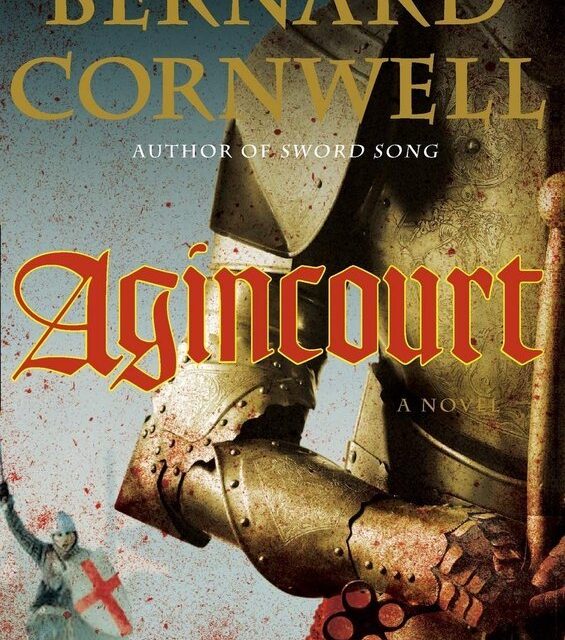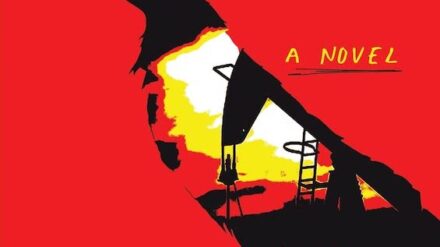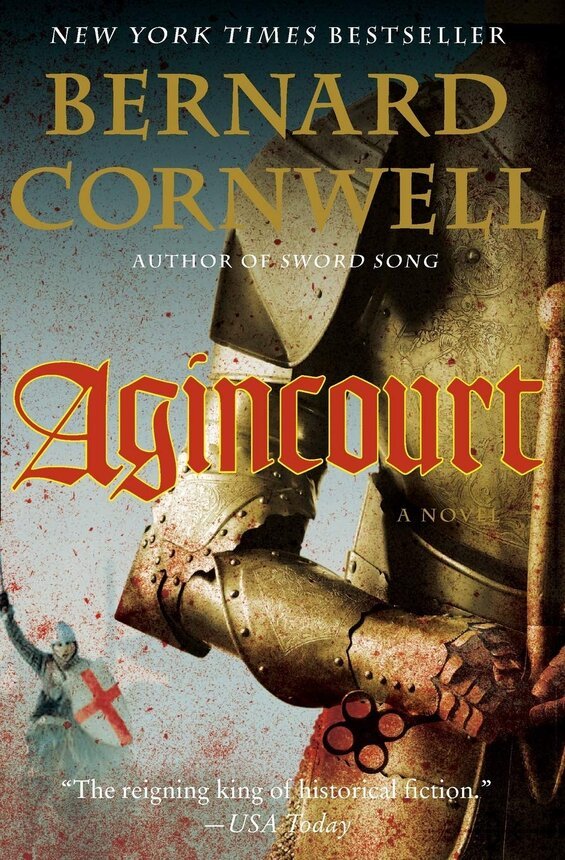
When military historians tick off the greatest battles in world history, the clash between the English and the French at Agincourt in 1415 is invariably on the list. Unlike some other battles, such as Stalingrad and Midway of recent memory, the victory at Agincourt didn’t represent a historic turning-point. Although the English under Henry V gained temporary advantage, the event brought no longer-term gains. It was one of many bloody battles in the Hundred Years’ War (1337–1453). Instead, Agincourt is remembered more for the lopsided victory it brought to England. Henry’s 6,000 exhausted and half-starved fighters, many of them violently ill with dysentery, challenged—and decisively defeated—a fresh French army of 30,000. And in his eponymous novel of the battle, popular historical novelist Bernard Cornwell conjures up all the blood, guts, and glory of the day.
This is the story of an archer named Nick Hook
Cornwell’s story opens in 1413. We meet Nicholas Hook, a forester in the service of Lord Slayton. For two generations, the Hooks have been engaged in a blood feud with the Perrill family. Hook is an archer and attempts to kill one of the hated Perrill brothers with bow and arrow, and he is whipped for the crime. But a greater offense causes him to be declared an outlaw. Nick has struck a priest, and one who is gentry as well—Lord Slayton’s brother-in-law to boot. The priest in question, Sir Martin, was attempting to rape a young woman. Nick stopped him. Now, to escape certain death for the crime, he flees to London. He will meet his true test on the field in France as he fights for his life and his king in the English victory at Agincourt.
Agincourt by Bernard Cornwell (2008) 467 pages ★★★★★
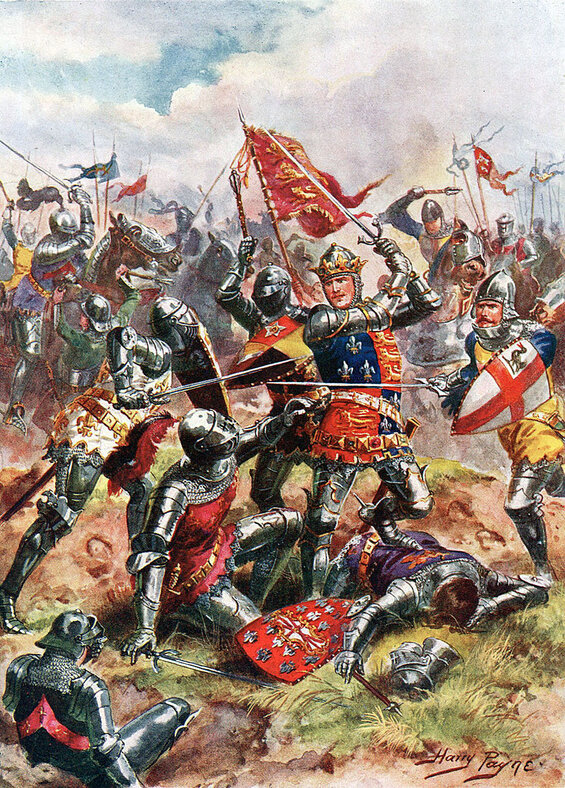
A siege, a long march through France, a victory at Agincourt
In the capital, Nick enlists in the service of the King as an archer. Over the next two years, we follow Nick as the army at length receives orders to board ships for France. Henry is determined to restore the French crown to England, which he regards as his own by right. Landing on the coast, their first target is the town of Harfleur. They mount a siege for more than a month as many in their army succumb to illness. When the town surrenders, it appears at first to be a pyrrhic victory, as Henry has lost thousands of his men. Most of the men believe they are now too few to take on the French. But, against the counsel of his advisers, Henry leaves behind a thousand-man garrison and sets out across France for English-held Calais. The army grows weaker and weaker along the way, only to find themselves trapped by a massive French force. Cornwell relates the story of the ensuing battle only in the final one hundred pages of the novel.
Meticulous historical research
Bernard Cornwell is well known for careful attention to historical fact in his many novels set in England’s past. His detailed account of the sources he consulted for Agincourt proves the point. Like so many historical events, much about the battle remains a matter of contention among historians. For example, there remains controversy about the numbers of men engaged. Estimates range from 6,000 to 9,000 English and 12,000 to 150,000 French. Cornwell cites various sources but ends up with the numbers most widely embraced by historians—6,000 against 30,000. Most of the English were archers like Nick Hook who employed the long bow. Nearly all the French in the engagement were armored men-at-arms with swords and other weapons.
“We few, we happy few, we band of brothers”
William Shakespeare famously memorialized the Battle of Agincourt in Henry V. In his telling, the King roused his troops on the eve of battle with the words, “We few, we happy few, we band of brothers; For he to-day that sheds his blood with me Shall be my brother.” Of course, Henry never said that. And in his retelling of the bloody battle that transpired there on St. Crispin’s Day in 1415, Cornwell brings his own imagination to the speech. No doubt it bears as little resemblance to what young King Henry actually said as Shakespeare’s imaginative account. For one thing, Henry V did not speak English. Rather, he communicated with his men in Middle English, a precursor of the language we speak today. And if you’ve ever tried to read anything in Middle English, you’ll understand how very different it was.
And, just as it isn’t clear already, if you haven’t yet filled your quota this year for blood, guts, and gore, this gripping historical novel will do the trick. This is a story of war when it was personal and face-to-face—and gruesome to a fault.
About the author
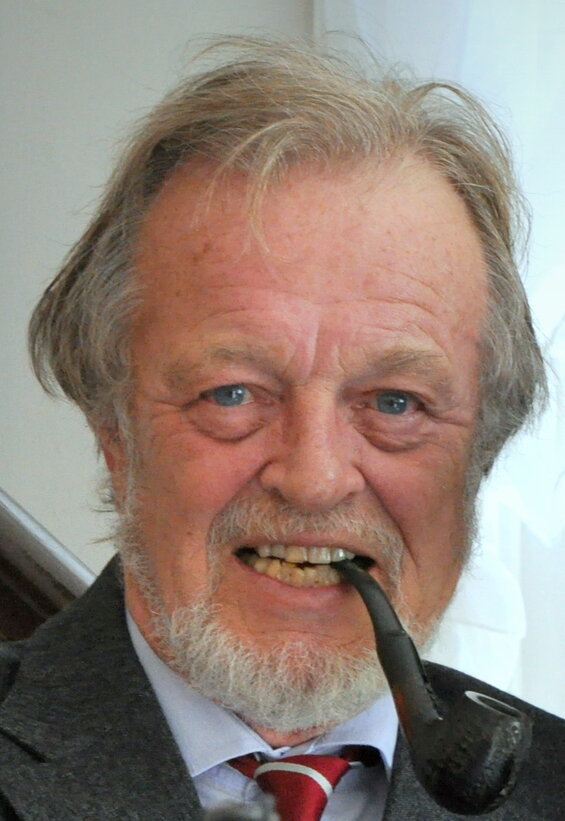
Bernard Cornwell is best known for the many historical novels he has written about British history, most notably the Richard Sharpe series about a rifleman in the Napoleonic Wars. He was a descendant of Uhtred the Bold, on whom he based his Last Kingdom series. (He is not related to Sir John Cornwell, a major character in Agincourt.)
Cornwell was born in London in 1944 and earned a degree in history from University College London. He worked as a teacher and then in British television for many years. He relocated to the United States with his second wife in 1979 and later became a US citizen.
For more reading
For an excellent popular history of the medieval era, see Powers and Thrones: A New History of the Middle Ages by Dan Jones (Change in the Middle Ages came thick and fast).
You might also be interested in:
- 20 most enlightening historical novels (plus dozens of runners-up)
- Top 10 great popular novels reviewed on this site
- The decade’s top 10 historical novels, mysteries & thrillers, and science fiction
- Top 10 historical mysteries and thrillers reviewed here
And you can always find my most popular reviews, and the most recent ones, plus a guide to this whole site, on the Home Page.

